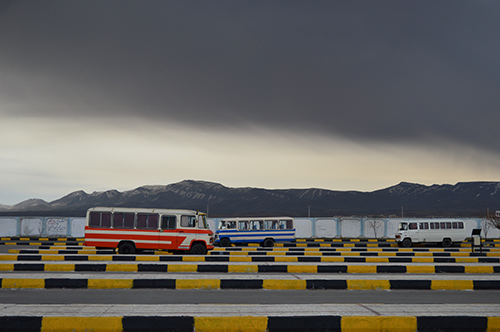From December 2019, the new virus COVID-19 began spreading at an increasing pace across the globe, travelling with infected individuals. At the time of writing, 0.004% of the global population is known to have been infected and, whilst 0.00016% have died (WHO 2020), prognoses for future developments suggest an exponential increase in numbers.
This is related to the historically unprecedented mobility of people due to globalisation, the neoliberal cuts of national health services which is now overwhelmed, and increased risk aversion (Jarvis 2007) which seems a contributing factor to the current moral panic.
In response to this situation key civil rights have been suspended for every individual, not just the contagious; the rights to mobility and the free movement of European Union residents have been suspended; the right to work (as most businesses, offices and administrations have been forced to shut down); the right to assemble and with this, de facto, the right to demonstrate; the right to education (because kindergartens, schools and universities are closed); the right to family life (lock downs prevent families to meet); the welfare of children is threatened (lock downs and closed playgrounds deprive children of essential opportunities); the right to practice one’s religion is reduced (because churches, mosque etc. are closed). Meanwhile, as I observed in Berlin, auxiliaries patrol public spaces and report those who resist to the police. Those who have been hit the hardest include ‘unskilled workers’ who can’t work from home, (e.g. Lobo 2020), and women who carry most of the burden of childcare.
The above list demonstrates how crucial the right to mobility is because most other rights, work, education, family life, can only be realised if there is a right to mobility. The current lock down also illustrates how vulnerable this right is and that states have the power and capacity to end international and internal mobility within days. Indeed, a global “state of exception” is enforced, as Agamben (2020) argues.
These measures are urged for by medical experts and bureaucrats who have become extremely influential figures even though they are not normally accountable to democratic institutions. The measures have been decided by leaders frequently likening the situation to a ‘war’ and the virus to ‘enemies’. They govern by decree without offering any appeal procedures or parliamentarian debates. Politics, media and public discourses are co-opted, while many critical voices or reflexive approaches seem to have vanished, are fiercely attacked, as economist Straubhaar has been, or are intimidated to an extent that they remain silent. In the name of one value, health security, many other values have been suspended.
What began in 2001 after the 9/11 terrorist attacks with the scrutiny of all air travellers, and continued in 2015 in response to the perceived migration ‘crisis’ with the partial closure of Schengen borders and militarised controls at some borders, has now been completed by the even more radical response to the corona virus crisis: all internal EU and all external borders are closed to people, but not to goods or capital. And because post-2001 and post-2015 restrictions were never lifted, this raises concerns over the future of these current ‘temporary’ ones.
It now feels like the infamous travel ban of the totalitarian communist East Germany GDR is back, though on a European scale. In legal terms, it is doubtful whether these measures are proportionate, as EU law requires (Thym 2020). “It is no coincidence that borders play a prominent role in the fight against the coronavirus” as Thym (ibid) suggests, not simply because of its “symbolic function” but as actual bureaucracies and technologies for containing human agency and governing social order and world affairs. Whilst mobility is depicted as the main cause for the spread of the virus its restriction is justified as the key response. The global reach of this totalitarian approach is unprecedented.
This response could be analysed within the context of a prolonged and structural global economic crisis, a crisis of the global political order, a crisis of globalisation and a crisis of border and mobility controls. The current policies thus appear like a version of Sombart’s (1913) and Schumpeter’s (1942) concept of a creative destruction: destroy the old social, political and economic arrangements – e.g. unprofitable businesses, outdated products and counterproductive rights – to pave the way for a new economic and political order.
Accordingly, for McKinsey the crisis is “an opportunity” with regards to “an imminent restructuring of the global economic order”. Could the fallout of the Coronavirus crisis thus herald another wave of major social changes? Could it even be that yet another crisis is used as an attack in the global class struggle (Montano 1975)?
I would suggest that a combination of crisis theories, the functioning of risk societies and the framework of “social transformation and migration” (Stephen Castles et al., 2015) might help to better understanding current developments.
About the auhtor: Franck Düvellhttps://www.dezim-institut.de/das-dezim-institut/dr-franck-duevell/, Institute for Migration and Intercultural Studies (IMIS), Osnabrück and German Centre for Integration and Migration Research (DeZIM), Berlin
